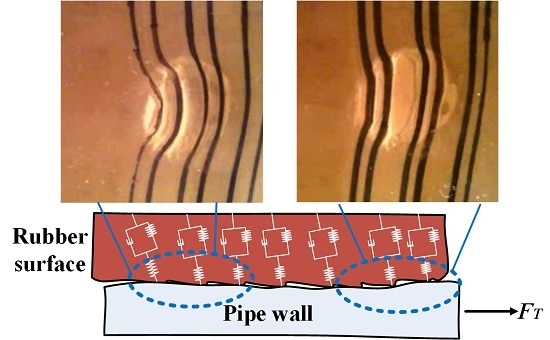The Static Frictional Behaviors of Rubber for Pipe-Laying Operation
Abstract
:Featured Application
Abstract
1. Introduction
2. Experimental
2.1. Samples
2.2. Fricitional Testing Instrument
2.3. Experimental Procedures
3. Results
3.1. Instability of the Maximum Static Friction
3.2. Deformation of Contact
4. Discussion
4.1. Normal Loading Condition
4.2. Tangential Load Condition
4.2.1. Description of Fracture Mechanics
4.2.2. Increasing Rate of the Tangential Load
5. Conclusions
Acknowledgments
Author Contributions
Conflicts of Interest
References
- Zhang, Z.; Wang, L.; Ci, H. An apparatus design and testing of a flexible pipe-laying in submarine context. Ocean Eng. 2015, 106, 386–395. [Google Scholar] [CrossRef]
- Szczotka, M. Pipe laying simulation with an active reel drive. Ocean Eng. 2010, 37, 539–548. [Google Scholar] [CrossRef]
- Beltrão, M.A.N.; Bastian, F.L. Fractographic analysis of weld metal and HAZ Regions of API X-80 Steel subjected to simulation of the Reel-Lay method. J. Mater. Eng. Perform. 2014, 23, 3523–3533. [Google Scholar] [CrossRef]
- Mattiazzo, G.; Stefano, M.; Guinzio, P.S. A tensioner simulator for use in a pipe laying design tool. Mechatronics 2009, 19, 1280–1285. [Google Scholar] [CrossRef]
- Tan, G.; Wang, D.; Liu, S.; Zhang, S. Probing tribological properties of waxy oil in pipeline pigging with fluorescence technique. Tribol. Int. 2014, 71, 26–37. [Google Scholar] [CrossRef]
- Persson, B.N.J. Theory of rubber friction and contact mechanics. J. Chem. Phys. 2001, 115, 3840–3861. [Google Scholar] [CrossRef]
- Lang, A.; Manfred, K. Influences of temperature and load on the dry friction behaviour of tire tread compounds in contact with rough granite. Wear 2017, 380, 15–25. [Google Scholar] [CrossRef]
- Johnson, K.L.; Kendall, K.; Roberts, A.D. Surface energy and the contact of elastic solids. Proceedings of the Royal Society of London A: Mathematical, Physical and Engineering Sciences. R. Soc. 1971, 324, 301–313. [Google Scholar] [CrossRef]
- Schallamach, A. How does rubber slide? Wear 1971, 17, 301–312. [Google Scholar] [CrossRef]
- Fukahori, Y.; Gabriel, P.; Busfield, J.J.C. How does rubber truly slide between Schallamach waves and stick–slip motion? Wear 2010, 269, 854–866. [Google Scholar] [CrossRef]
- Brörmann, K.; Barel, I.; Urbakh, M.; Bennewitz, R. Friction on a microstructured elastomer surface. Tribol. Lett. 2013, 50, 3–15. [Google Scholar] [CrossRef]
- Ghosh, A.; Leonard, B.; Sadeghi, F. A stress based damage mechanics model to simulate fretting wear of Hertzian line contact in partial slip. Wear 2013, 307, 87–99. [Google Scholar] [CrossRef]
- Mindlin, R.D. Compliance of elastic bodies in contact. J. Appl. Mech. 1949, 16, 259–268. [Google Scholar]
- Persson, B.N.J.; Albohr, O.; Mancosu, F.; Peveri, V.; Samoilov, V.N.; Sivebæk, I.M. On the nature of the static friction, kinetic friction and creep. Wear 2003, 254, 835–851. [Google Scholar] [CrossRef]
- Cho, D.H.; Bhushan, B.; Dyess, J. Mechanisms of static and kinetic friction of polypropylene, polyethylene terephthalate, and high-density polyethylene pairs during sliding. Tribol. Int. 2016, 94, 165–175. [Google Scholar] [CrossRef]
- Loeve, A.J.; Krijger, T.; Mugge, W.; Breedveld, P.; Dodou, D.; Dankelman, J. Static friction of stainless steel wire rope-rubber contacts. Wear 2014, 319, 27–37. [Google Scholar] [CrossRef]
- Deladi, E.L.; De Rooij, M.B.; Schipper, D.J. Modelling of static friction in rubber-metal contact. Tribol. Int. 2007, 40, 588–594. [Google Scholar] [CrossRef]
- Maugis, D.; Barquins, M. Fracture mechanics and adherence of viscoelastic solids. Adhes. Adsorpt. Polym. 1980, 12, 203–277. [Google Scholar]
- Savkoor, A.R. Mechanics of sliding friction of elastomers. Wear 1986, 113, 37–60. [Google Scholar] [CrossRef]
- Scheibert, J.; Dysthe, D.K. Role of friction-induced torque in stick-slip motion. Europhys. Lett. 2010, 92, 54001. [Google Scholar] [CrossRef]
- Nguyen, D.T.; Paolino, P.; Audry, M.C. Surface pressure and shear stress fields within a frictional contact on rubber. J. Adhes. 2011, 87, 235–250. [Google Scholar] [CrossRef]
- Zhou, Y.; Wang, D.; Guo, Y. The Reduction of Static Friction of Rubber Contact under Sea Water Droplet Lubrication. Lubricants 2017, 5, 12. [Google Scholar] [CrossRef]
- Cao, Z.Q.; Wang, D.G.; Cong, C.B.; Wang, Y.F.; Zhou, Q. Dependence of abrasion behavior on cross-linked heterogeneity in unfilled nitrile rubber. Tribol. Int. 2014, 69, 141–149. [Google Scholar] [CrossRef]
- Persson, B.N.J.; Albohr, O.; Tartaglino, U.; Volokitin, A.I.; Tosatti, E. On the nature of surface roughness with application to contact mechanics, sealing, rubber friction and adhesion. J. Phys. 2004, 17, R1. [Google Scholar] [CrossRef] [PubMed]
- Liu, S.; Tan, G.; Wang, D. Microbubble phenomenon in contact area between soft tribological interfaces in sliding contact. Tribol. Lett. 2015, 57, 17. [Google Scholar] [CrossRef]
- Król, D.J.; Wymysłowski, A.; Allaf, K.N. Adhesion work analysis through molecular modeling and wetting angle measurement. Microelectron. Reliab. 2015, 55, 758–764. [Google Scholar]
- Maegawa, S.; Itoigawa, F.; Nakamura, T. Effect of normal load on friction coefficient for sliding contact between rough rubber surface and rigid smooth plane. Tribol. Int. 2015, 92, 335–343. [Google Scholar] [CrossRef]
- Zhang, J.; Ru, J.; Chen, H.; Li, D.; Lu, J. Viscoelastic creep and relaxation of dielectric elastomers characterized by a Kelvin-Voigt-Maxwell model. Appl. Phys. Lett. 2017, 110, 044104. [Google Scholar] [CrossRef]
- Kashiwagi, T.; Mu, M.; Winey, K.; Cipriano, B.; Raghavan, S.R.; Pack, S.; Harris, R. Relation between the viscoelastic and flammability properties of polymer nanocomposites. Polymer 2008, 49, 4358–4368. [Google Scholar] [CrossRef]
- Fleury, G.; Schlatter, G.; Brochon, C.; Travelet, C.; Lapp, A.; Lindner, P.; Hadziioannou, G. Topological polymer networks with sliding cross-link points: The “sliding gels”. Relationship between their molecular structure and the viscoelastic as well as the swelling properties. Macromolecules 2007, 40, 535–543. [Google Scholar] [CrossRef]
- Barquins, M. Adherence, friction and wear of rubber-like materials. Wear 1992, 158, 87–117. [Google Scholar] [CrossRef]
- Georgiopoulos, P.; Kontou, E.; Christopoulos, A. Short-term creep behavior of a biodegradable polymer reinforced with wood-fibers. Compos. Eng. 2015, 80, 134–144. [Google Scholar] [CrossRef]

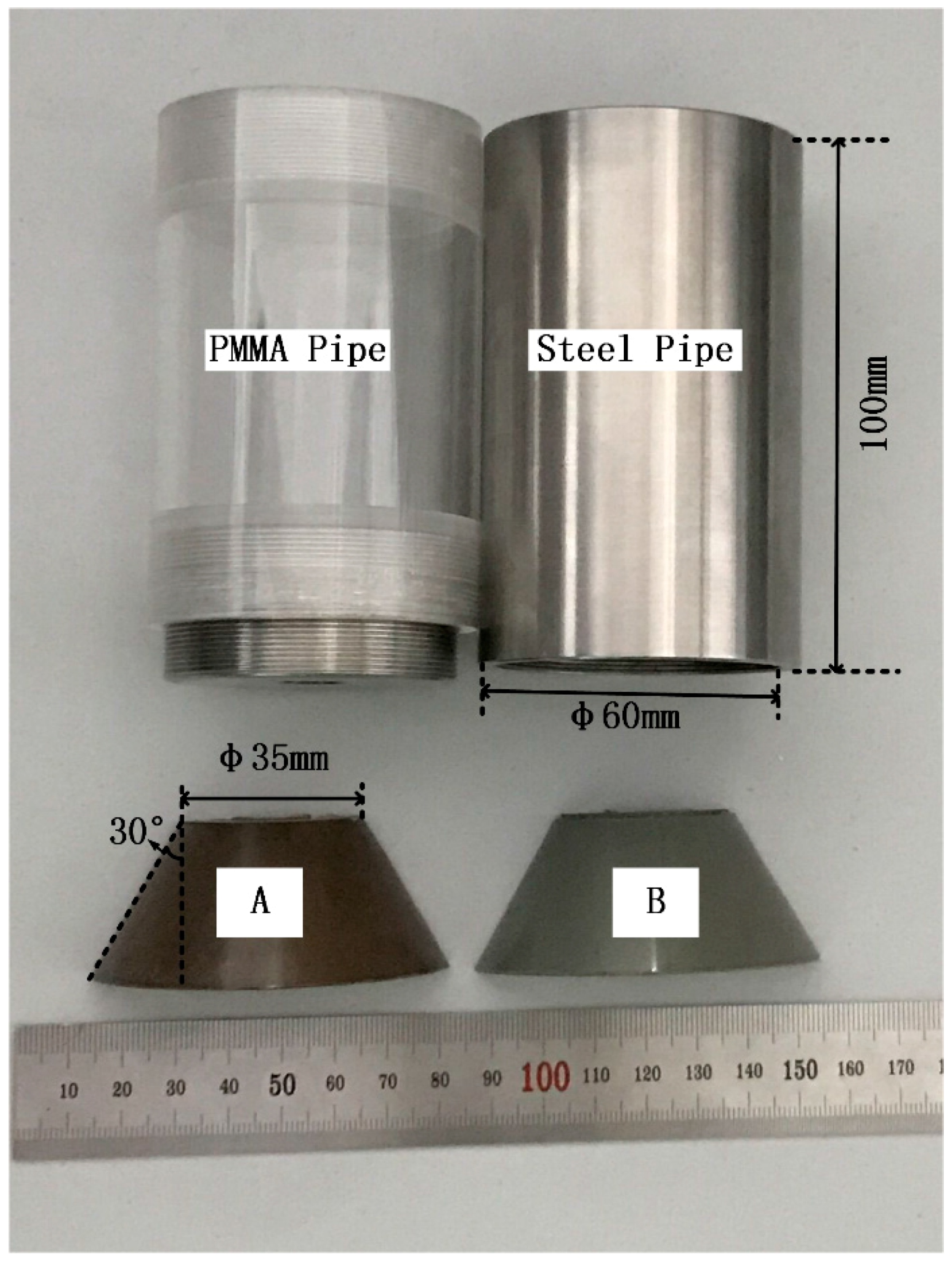


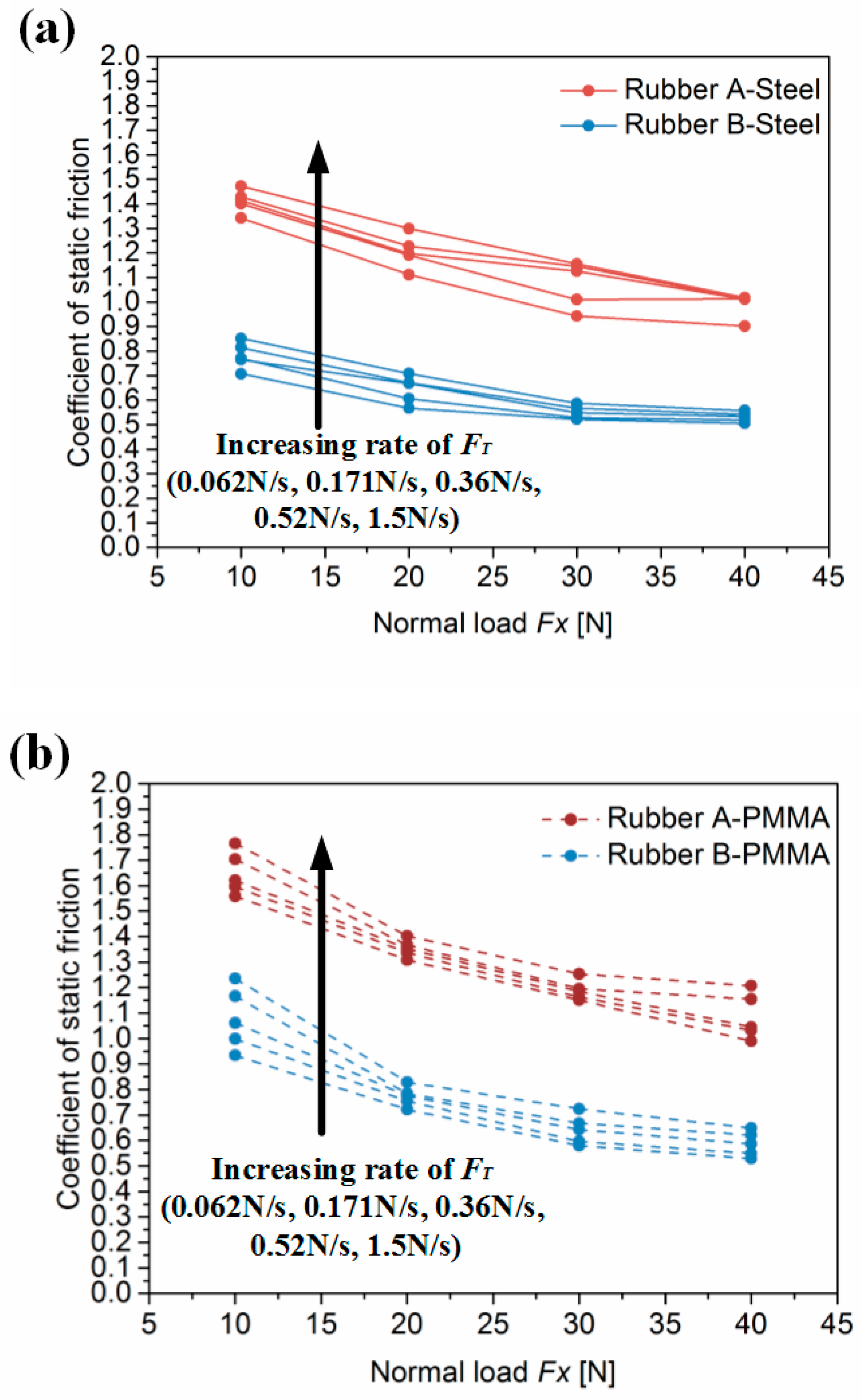


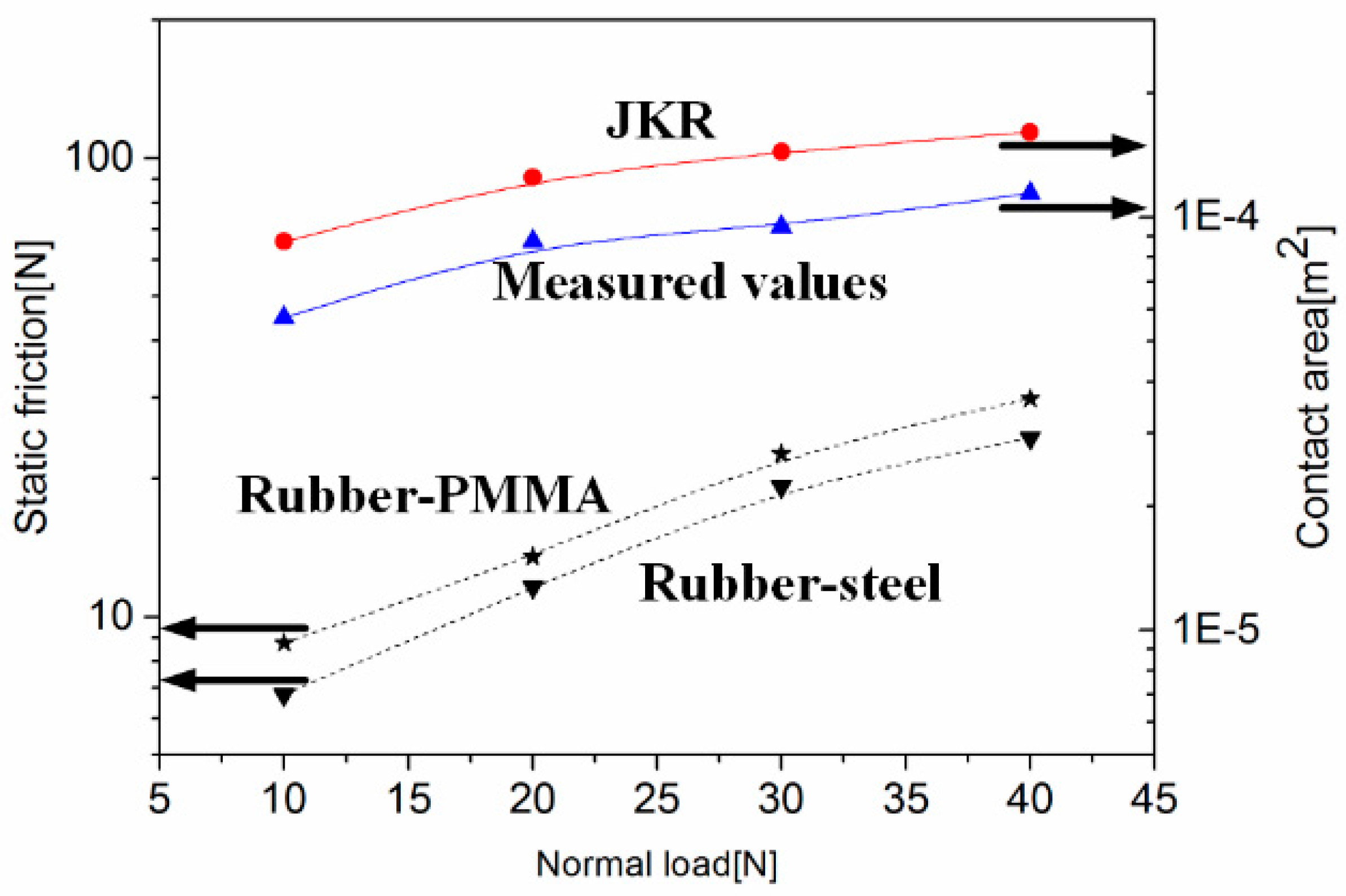
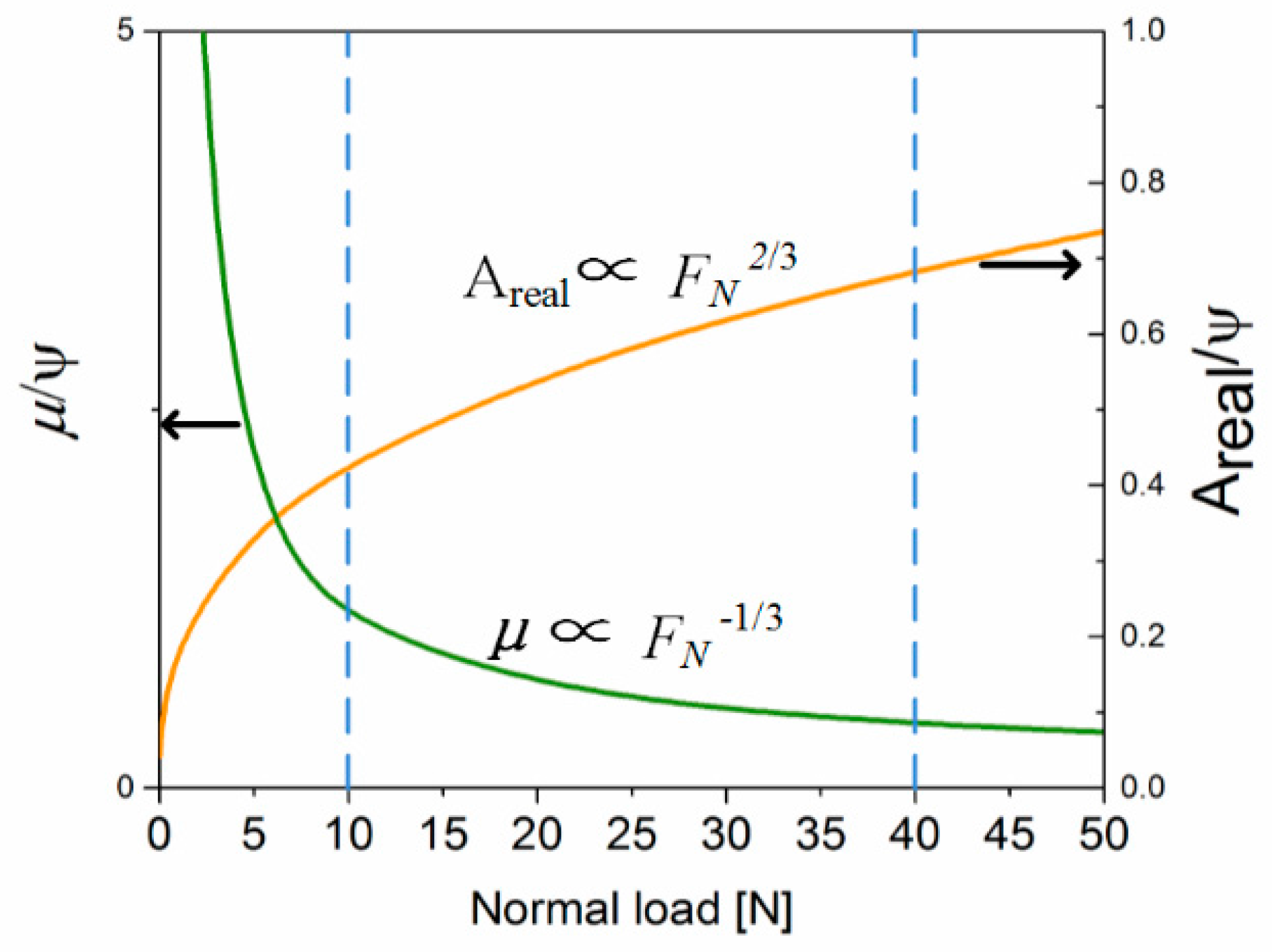
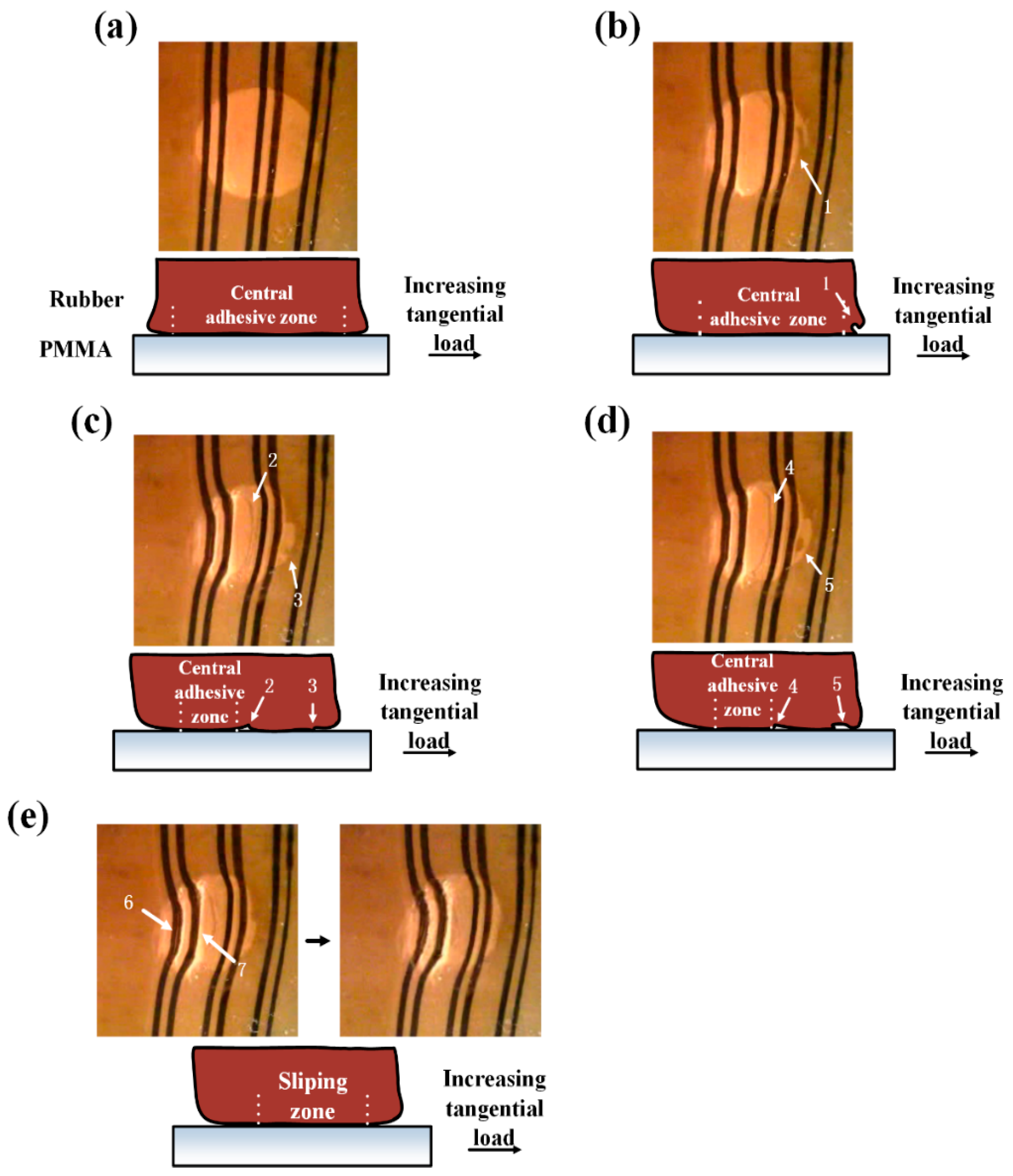

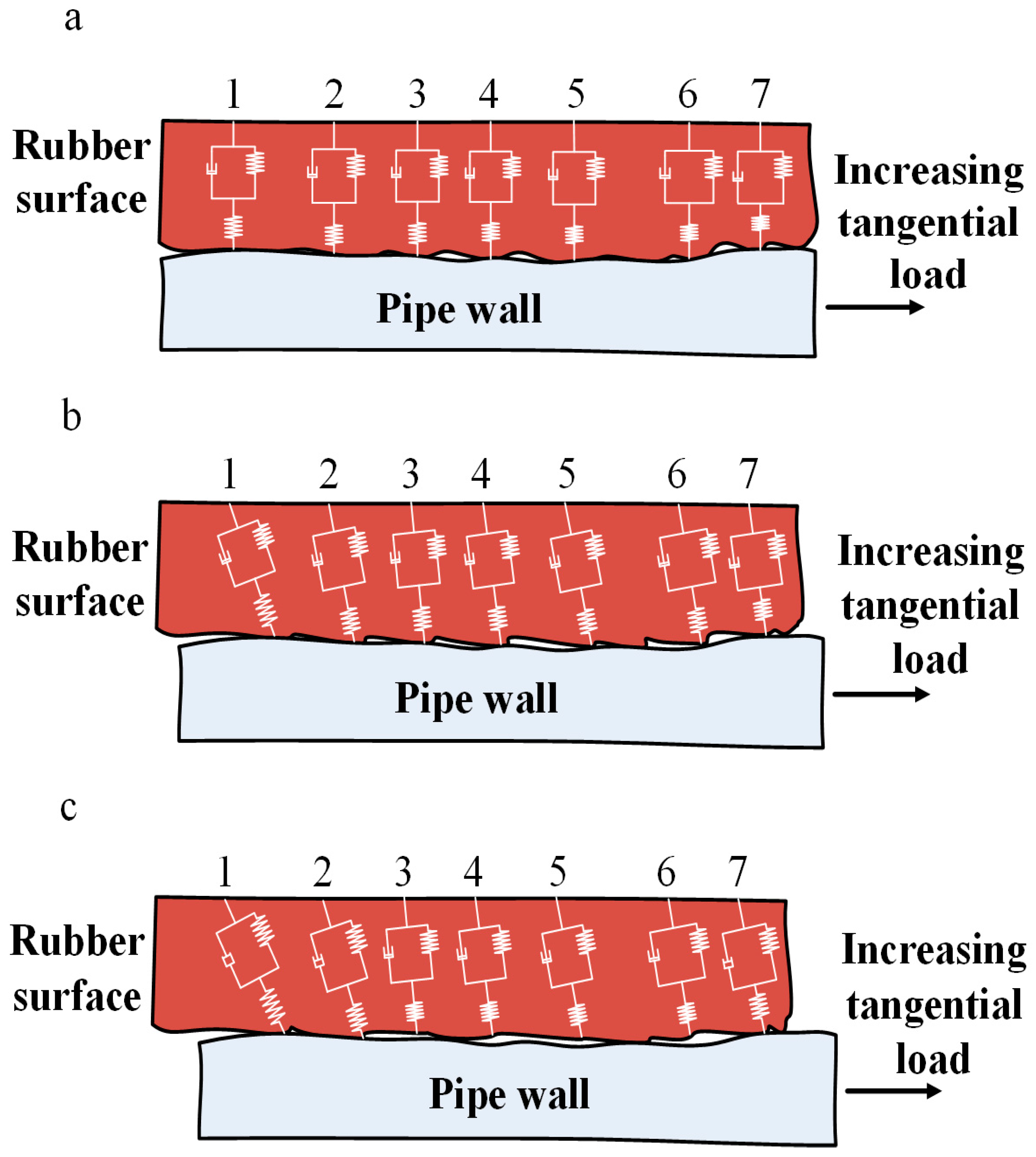
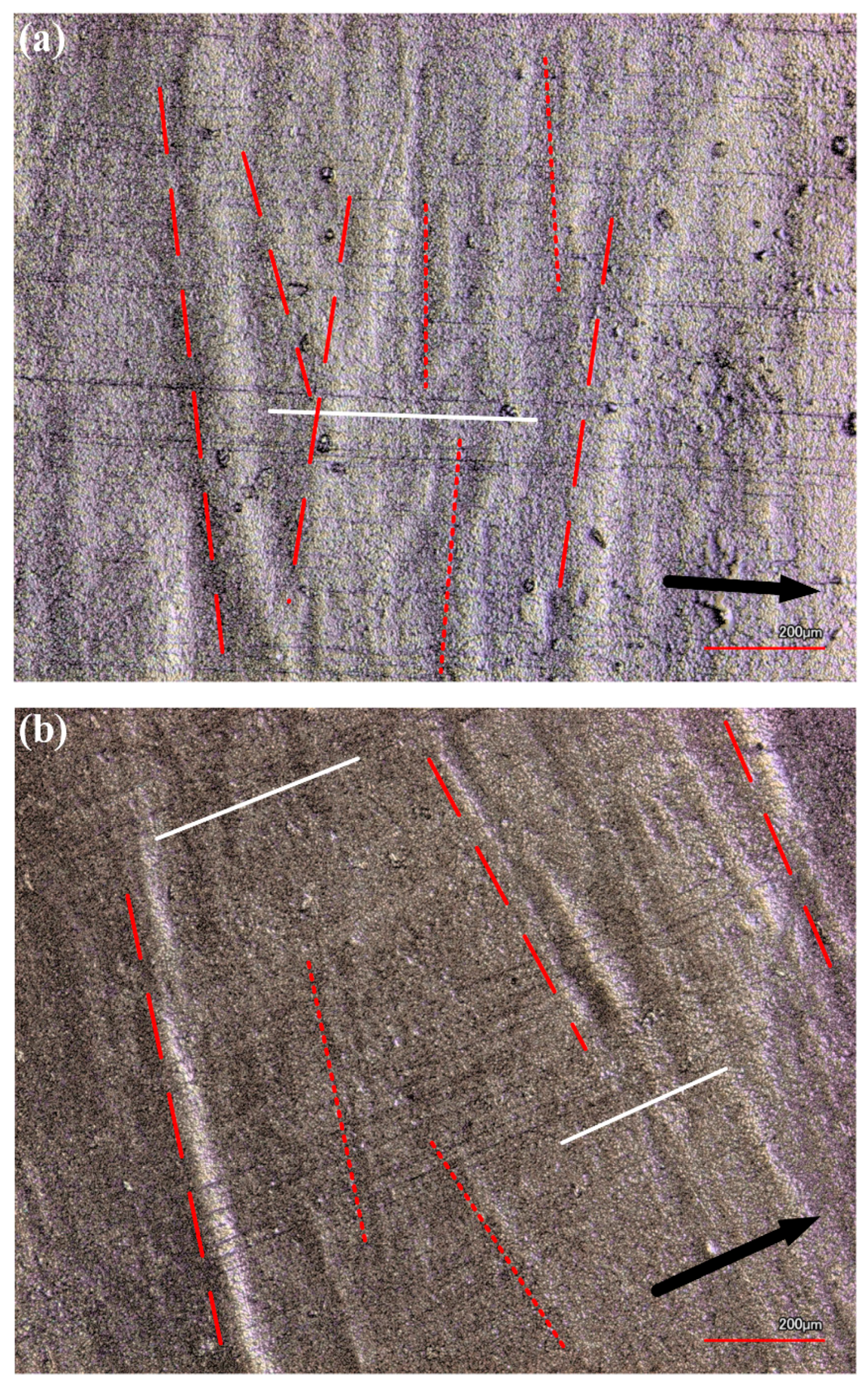
| Rubber Type | Mechanical Properties | ||||
|---|---|---|---|---|---|
| Elastic Modulus | Tensile Strength | Shore Hardness | Roughness | ||
| [MPa] | [MPa] | Ra [μm] | RMS [nm] | ||
| A | 2.26 | 13.2 | 37 | 3.1 | 125 |
| B | 3.7 | 12.79 | 51 | 3.2 | 126 |
| Pipe Type | Mechanical Properties | |||
|---|---|---|---|---|
| Elastic Modulus | Rockwell Hardness | Roughness | ||
| [MPa] | Ra [μm] | RMS [nm] | ||
| Steel | 2.1 × 105 | 80 | 1.7 | 68 |
| PMMA | 3 × 103 | 99 | 1.6 | 65 |
| Rubber Type | Pipe Type | Normal Load [N] | Increasing Rate of FT [N/s] |
|---|---|---|---|
| A | Steel, PMMA | 10, 20, 30, 40 | 0.062, 0.171, 0.36, 0.52, 1.5 |
| B | Steel, PMMA |
© 2017 by the authors. Licensee MDPI, Basel, Switzerland. This article is an open access article distributed under the terms and conditions of the Creative Commons Attribution (CC BY) license (http://creativecommons.org/licenses/by/4.0/).
Share and Cite
Zhou, Y.-J.; Wang, D.-G.; Guo, Y.-B.; Liu, S.-H. The Static Frictional Behaviors of Rubber for Pipe-Laying Operation. Appl. Sci. 2017, 7, 760. https://doi.org/10.3390/app7080760
Zhou Y-J, Wang D-G, Guo Y-B, Liu S-H. The Static Frictional Behaviors of Rubber for Pipe-Laying Operation. Applied Sciences. 2017; 7(8):760. https://doi.org/10.3390/app7080760
Chicago/Turabian StyleZhou, Yong-Jie, De-Guo Wang, Yan-Bao Guo, and Shu-Hai Liu. 2017. "The Static Frictional Behaviors of Rubber for Pipe-Laying Operation" Applied Sciences 7, no. 8: 760. https://doi.org/10.3390/app7080760



